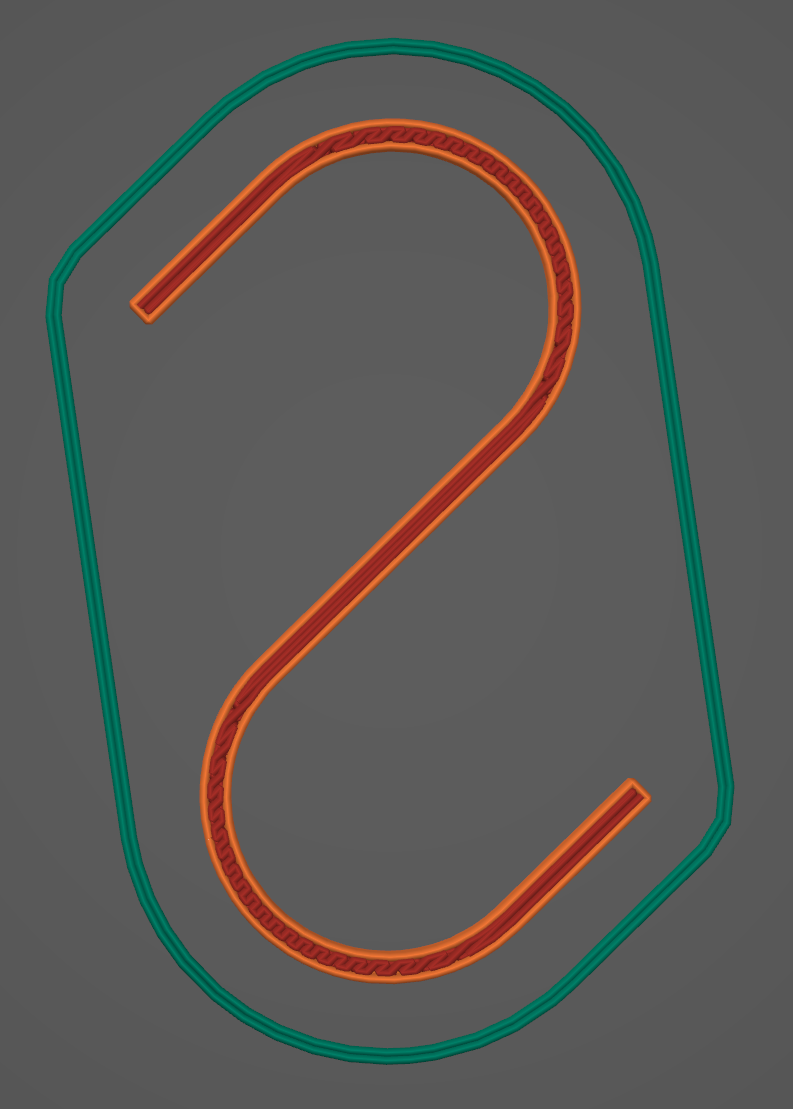nice 45° angles.
Didn't he already kick ass in HL1?
I suggest uploading some default-size STLs so we can view the parts in 3D.
The difference is, Elon Musk sometimes thinks that it would be pretty neat if his private jets were electric. When has Taylor Swift ever done that??
I haven't done any tests where the tensile/breaking strength is relevant, just rigidity. Maybe it's possible to optimize the infill based on finite element analysis or something, but that's not a rabbit hole I'm looking to go down.
I have tested that an all-walls sandwich (PrusaSlicer "solid infill every 3 layers") does not improve rigidity. So far nothing beats 1-wall + rectilinear in that department.
Okay, but if my 2-wall hook bends into a straight line, then I don't really care about the durability of that no-longer-hook-shaped object.
Edit: I agree that 2-wall could make sense, if your goal is to reuse the hook (with a more appropriate load) after the heavy load falls off. That's analogous to protecting a wire with a circuit breaker.
But the long arm of the law can't possibly be tyrannical! 🦖
That's why I put everything in the dishwasher. Knives, scissors, sponges, brushes, nonstick pans... if you can't survive the dishwasher then GTFO my kitchen.
Brown witches are extracted from lignite coal using gasification.
Pink witches are produced by electrolysis using nuclear power.
It's not really clear what you're saying, because they're both "my design". Could you specify 1 wall vs. 2 wall?

I just tested this hook by hanging a 5 gallon bucket and gradually adding water. PLA 1 wall = 1710 g, 2 wall = 1178 g. The thing is, a 1.5 mm hook fails by straightening rather than snapping, so rigidity is more important than strength.
Edit: I also tried PETG: 1 wall = 1441 g, 2wall <998 g (failed to hold the empty bucket)
So the 1 wall hooks can support >40% more weight before straightening enough that the bucket slips off. That's more significant that I expected.
Edit2: Part of that 40% difference is due to friction; the 1-wall hook has a rough surface that makes the bucket less likely to slip off. But even with bluetack on the hooks, 1-wall has less deflection than 2-wall for the same weight.
Another confounding variable is the weight of the hook itself: 2-wall = (0.83g slicer, 0.78g actual); 1-wall = (0.95g slicer, 0.88g actual). I don't know if that extra weight is coming from density or volume, but either way the stronger hook is more expensive.
Sigh, reality is so complicated.
who is life